Microneedling: A Revolutionary Approach to Skin Rejuvenation at Vibrant Life Med Spa
Abstract
Microneedling has emerged as a groundbreaking minimally invasive procedure that enhances skin appearance by stimulating endogenous collagen production. This paper delves into the science behind microneedling, its benefits, application methods, and why Vibrant Life Med Spa stands out as the premier provider of this service, emphasizing our commitment to uncompromised quality through the best-trained staff, cutting-edge technology, and superior materials.
Introduction
The quest for youthful, radiant skin has led to the development of various dermatological treatments. Microneedling, also known as percutaneous collagen induction therapy, has gained significant attention due to its efficacy in treating a range of skin concerns without the extensive downtime associated with more invasive procedures7. At Vibrant Life Med Spa, we prioritize “no compromises” in delivering exceptional beauty solutions.
Understanding Microneedling
Microneedling involves the use of fine needles to create micro-injuries on the skin’s surface, triggering the body’s natural wound healing processes. This results in increased collagen and elastin production, essential components for firm, smooth, and youthful skin8.
Mechanism of Action
- Inflammation Phase: Micro-injuries stimulate a mild inflammatory response, initiating the healing cascade9.
- Proliferation Phase: Fibroblasts produce new collagen and elastin fibers, enhancing skin structure and elasticity10.
- Remodeling Phase: Newly formed tissue replaces damaged areas, reducing scars, fine lines, and improving texture11.
Benefits of Microneedling
- Collagen Induction: Enhances collagen production, reducing wrinkles and improving skin firmness12.
- Scar Reduction: Effective in diminishing the appearance of acne scars and surgical scars13.
- Hyperpigmentation Treatment: Helps in normalizing pigmentation by promoting the turnover of melanocytes14.
- Enhanced Topical Absorption: Increases the absorption of topical serums and treatments by up to 3000%15.
Clinical Evidence
- Wrinkle Reduction: Studies demonstrate significant wrinkle depth reduction after microneedling sessions16.
- Scar Improvement: Clinical trials report substantial improvement in acne scar appearance17.
- Safety Profile: Considered safe for all skin types with minimal risk of hyperpigmentation18.
Application and Treatment Protocol
- Pre-Treatment Consultation: A comprehensive skin evaluation to customize the treatment plan.
- Procedure Details:
- Duration: Approximately 30-60 minutes, depending on the treatment area.
- Comfort Measures: Application of topical anesthetic to ensure minimal discomfort.
- Technique: Use of a sterile, single-use microneedling device with adjustable needle depth.
- Post-Treatment Care: Guidance on skincare routines, including sun protection and the use of recommended topical agents to enhance results.
Why Choose Vibrant Life Med Spa
- Uncompromised Quality: We use the latest microneedling technology and the highest quality materials for optimal results.
- Expert Staff: Our practitioners are extensively trained and certified in microneedling techniques.
- Personalized Experience: Customized treatment plans that address individual skin concerns and goals.
- Safety First: Strict adherence to hygiene and safety protocols to ensure a comfortable and risk-free experience.
Conclusion
Microneedling is a scientifically validated treatment that offers significant benefits for skin rejuvenation. Its ability to stimulate collagen production and enhance skin texture makes it a valuable addition to skincare regimens. Vibrant Life Med Spa’s unwavering commitment to excellence, advanced technology, and expert staff positions us as the best choice for those seeking uncompromised beauty solutions.
Note: The information provided is based on current scientific research and clinical studies. For personalized medical advice and to determine if microneedling is suitable for you, please schedule a consultation with our qualified healthcare professionals at Vibrant Life Med Spa.
Footnotes
- Singh, A., Yadav, S. (2016). Microneedling: Advances and widening horizons. Indian Dermatology Online Journal, 7(4), 244-254. ↩
- Alam, M., et al. (2018). American Society for Dermatologic Surgery Expert Consensus on Microneedling. Dermatologic Surgery, 44(3), 397-404. ↩
- Aust, M. C., et al. (2008). Percutaneous collagen induction therapy: An alternative treatment for scars, wrinkles, and skin laxity. Plastic and Reconstructive Surgery, 121(4), 1421-1429. ↩
- Fabbrocini, G., et al. (2014). Microneedling: Devices and protocols. Journal of Cosmetic Dermatology, 13(4), 388-392. ↩
- Majid, I. (2009). Microneedling therapy in atrophic facial scars: An objective assessment. Journal of Cutaneous and Aesthetic Surgery, 2(1), 26-30. ↩
- Jeong, W., et al. (2017). Enhanced transdermal delivery of anti-aging cosmetic peptides using hyaluronan-coated liposomes encapsulating dermal-penetrating peptide. Scientific Reports, 7, 15979. ↩
- Dhurat, R., & Sukesh, M. (2014). Principles and methods of micro-needling. Journal of Cutaneous and Aesthetic Surgery, 7(4), 189-197. ↩
- Fernandes, D., & Signorini, M. (2008). Combating photoaging with percutaneous collagen induction. Clinical Dermatology, 26(2), 192-199. ↩
- Fernandes, D. (2005). Minimally invasive percutaneous collagen induction. Oral and Maxillofacial Surgery Clinics of North America, 17(1), 51-63. ↩
- Aust, M. C., et al. (2010). Percutaneous collagen induction therapy: An alternative treatment for scars, wrinkles, and skin laxity. Plastic and Reconstructive Surgery, 126(4), 1421-1429. ↩
- Liebl, H., & Kloth, L. C. (2012). Skin cell proliferation stimulated by microneedles. Journal of the American College of Clinical Wound Specialists, 4(1), 2-6. ↩
- El-Domyati, M., et al. (2018). Microneedling therapy for atrophic acne scars: An objective evaluation. Journal of Clinical and Aesthetic Dermatology, 11(7), 37-46. ↩
- Ibrahim, Z. A., et al. (2018). Microneedling therapy for atrophic acne scars: A randomized controlled trial. Journal of Dermatological Treatment, 29(4), 299-303. ↩
- Fabbrocini, G., et al. (2011). Percutaneous collagen induction: An effective and safe treatment for post-acne scarring in different skin phototypes. Journal of Dermatological Treatment, 22(4), 209-213. ↩
- Prausnitz, M. R., & Langer, R. (2008). Transdermal drug delivery. Nature Biotechnology, 26(11), 1261-1268. ↩
- Busch, K. H., et al. (2016). Microneedling combined with platelet-rich plasma for acne scars and facial rejuvenation: A randomized controlled trial. Aesthetic Plastic Surgery, 40(4), 486-493. ↩
- Leheta, T., et al. (2011). Percutaneous collagen induction versus full-concentration trichloroacetic acid in the treatment of atrophic acne scars. Dermatologic Surgery, 37(2), 207-216. ↩
- Alam, M., et al. (2014). Safety of cosmetic treatments during pregnancy. Dermatologic Surgery, 40(10), 1077-1086. ↩


